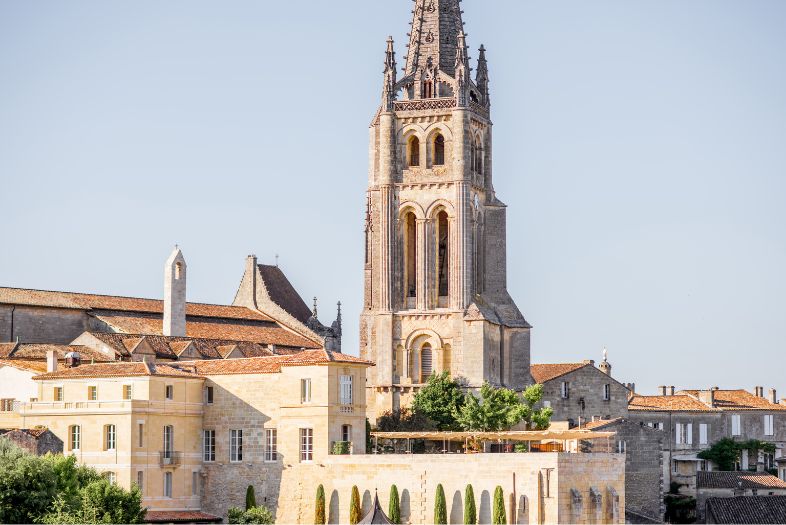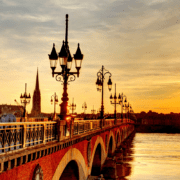
History of Saint-Émilion: from medieval times to the present wine-growing period
We invite you to embark on a fascinating journey with our article on the history of Saint-Émilion. From its medieval roots to its renowned wine tradition today, this is a living treasure that offers more than just picturesque landscapes and exquisite wines.
Discover how this charming village, with its historic monuments and vineyards, has evolved over the centuries. We will explore together the secrets of its cobbled streets and the stories of those who have shaped its heritage. For a better understanding you can opt for a free tour of Saint Emilion.
If you like history, culture and good wine, this article is a must for you. Immerse yourself in the pages of the living history of Saint-Émilion and let yourself be carried away by a journey that goes beyond time.
Why does the legacy of Saint Emilion live on?
Saint-Émilion is not just a destination; it is an enriching experience intertwined with history, art and, of course, wine. With its medieval charm and its wine prestige, it is a place where every street, every stone and every bottle tells a story.
To begin to get to know it, you can start your tour with a wine tasting in Saint Emilion. This village is world-renowned for its vineyards and cellars, where the winemaking tradition has been perfected over centuries.
To participate in a wine tasting here is not simply to taste, it is to immerse yourself in a tradition that has defined the identity and economy of the region. Each sip is a journey into its history, revealing the secrets of its terroir and the mastery of its winemakers.
But Saint-Émilion is more than wine. When asked what to see in Saint Emilion, the answer extends from its impressive monuments to its charming cobbled streets.
The monolithic church, carved into the rock, is just one example of the architectural marvels the village has to offer. Strolling through its streets is like walking through an open-air museum, where every building has a story to tell. The views from the bell tower are not to be missed and the catacombs of Saint-Émilion offer a unique insight into the history of the site.
The question of whether Saint Emilion is worth visiting is easily answered by the wealth of experiences on offer. Beyond the wine tasting and architectural beauty, the village is home to festivals, markets and a welcoming community that proudly celebrates its heritage.
The origins of its name
To know a little about the history of Saint Emilion, the first thing you need to know is the origin of its name. Well, it comes from Emilion, an old Breton monk who had chosen Ascumbas (the first name of the town) as his place of retirement.
He arrived alone and settled on a cliff, where he gradually dug out a rather rustic troglodytic hermitage. When the monk died around 787, this building was enlarged, giving way to what is known today as the Monolithic Church. In honour of the monk, the town was renamed and has since been known as Saint Émilion.
It found its maximum development during the Middle Ages, when the ramparts were built, which are undoubtedly one of the main sights to see in Saint Emilion.
Evolution over time
The site reached its peak of development during the Middle Ages, when the city walls were built.
In the 9th century, the church and the catacombs were among the main constructions. They also allowed the religious community of Saint Benedict to settle here. Later, in 1152, the region came under the rule of the English, which allowed for a fairly smooth development of trade in the area.
Around 1199, the main merchants of the city signed a decree with the King of England that allowed them to receive an administrative and civil guardianship, known as La Jurade. In this way, they would be in charge of the administration, economy and other factors of the city.
In 1289, King Edward I further reaffirmed the agreement. He greatly extended the powers of La Jurade, extending them to the neighbouring parishes, which eventually formed the Jurisdiction of Saint-Emilion.
Between the 13th and 16th centuries, with the 100 Years’ War in progress, the city walls were built. In fact, in 1237, the King’s Tower, which served as the town hall, was begun. It is a building in the Anglo-Norman style for the most part.
With the raising of the walls, little by little the religious communities that were established on the outskirts of the city had to move. One of these were the Franciscans, also known as the Cordeliers and the Dominicans or Jacobins.
With the Peace Treaty signed in 1453, after the Battle of Castillion, the city passed from the English crown to the French, although this calm was short-lived. In the early 1560s, various religious conflicts began which had serious consequences for the city and its economy, with sackings taking place between 1580 and 1589.
During the French Revolution, the religious life of the town was practically destroyed, but depopulation was inevitable, culminating in the dissolution of the Jurade.
A history marked by wine
It is believed that it was the Romans who started wine production in Saint Émilion, so vineyards have been part of the landscape practically since time immemorial. In fact, during English control, the trade grew exceptionally well thanks to the popularity of wine from Saint Émilion in England.
It was here that the first syndicate of wine producers in France was founded around 1884. Nowadays, Saint Emilion is divided into two appellations: Saint-Emilion Grand Cru, with more than 800 vineyards and AOC Saint – Emilion, with more than 5,400 hectares.
For some, the true glory of the town lies in its soil, as the combination of oceanic and continental climate, combined with the chalky soil, create a perfect environment for growing vines.
Wine tourism destination
With Saint Emilion’s history so closely linked to wine, it’s no wonder that this is one of the top wine tourism destinations in the world.
Once you arrive in the city, one of the most attractive plans is to go wine tasting. As well as allowing you to savour some of the most exquisite wines in the world, you will also learn first-hand all about its wonderful history and the characteristics that make it so special.
In 1948, La Jurade was reactivated, but this time as a kind of fraternity whose main and basically only function is to preserve and promote the wines of Saint-Emilion throughout the world.
Charming little streets
In addition to its historic buildings, Saint Émilion is known for its narrow streets, many of which are still cobbled, so you’ll feel like you’ve travelled back in time.
It’s normal that you might feel a bit lost, because they can seem like a real labyrinth, but don’t worry, there’s nothing to be afraid of. Among them you will find small cafés and craft shops, as well as restaurants, where wine is of course the main protagonist, both at the bar and as an ingredient in the cuisine.
Bright future and plenty of wine
Despite its long history, Saint Émilion remains faithful to its traditions and customs, keeping its charm and evolving around the world of wine. Both its inhabitants and producers combine their wonderful heritage with the latest in oenological innovation.



